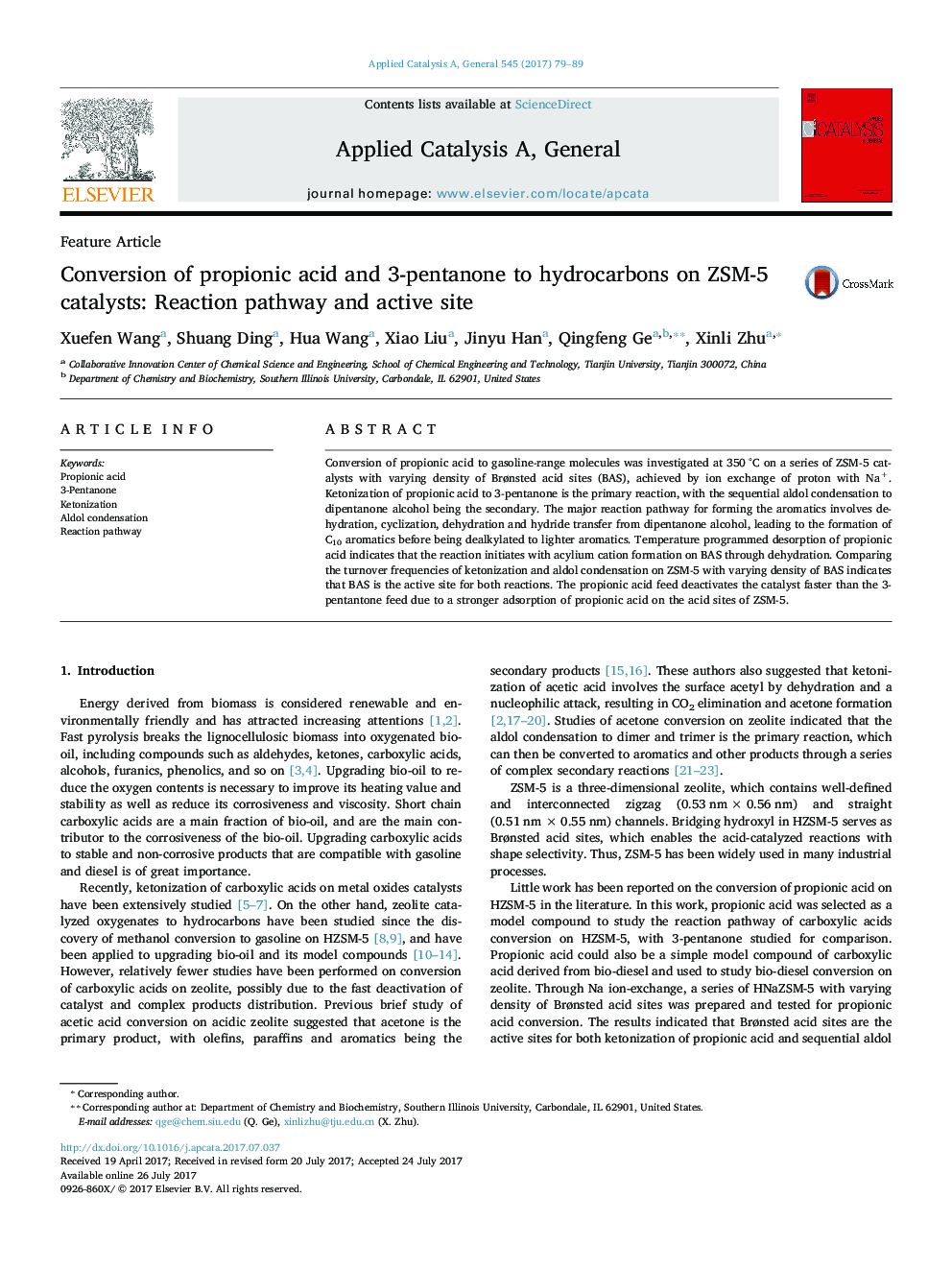| Article ID | Journal | Published Year | Pages | File Type |
|---|---|---|---|---|
| 6453253 | Applied Catalysis A: General | 2017 | 11 Pages |
Conversion of propionic acid to gasoline-range molecules was investigated at 350 °C on a series of ZSM-5 catalysts with varying density of Brønsted acid sites (BAS), achieved by ion exchange of proton with Na+. Ketonization of propionic acid to 3-pentanone is the primary reaction, with the sequential aldol condensation to dipentanone alcohol being the secondary. The major reaction pathway for forming the aromatics involves dehydration, cyclization, dehydration and hydride transfer from dipentanone alcohol, leading to the formation of C10 aromatics before being dealkylated to lighter aromatics. Temperature programmed desorption of propionic acid indicates that the reaction initiates with acylium cation formation on BAS through dehydration. Comparing the turnover frequencies of ketonization and aldol condensation on ZSM-5 with varying density of BAS indicates that BAS is the active site for both reactions. The propionic acid feed deactivates the catalyst faster than the 3-pentantone feed due to a stronger adsorption of propionic acid on the acid sites of ZSM-5.
Graphical abstractHighlightsâ¢Conversion of propionic acid and 3-pentanone to hydrocarbons is achieved on HZSM-5.â¢Ketonization is the primary reaction while aldol condensation is the secondary.â¢Brønsted acid sites are the active sites for both ketonization and aldol condensation.â¢Ketonization is initiated with acylium cation formation through dehydration.Download high-res image (226KB)Download full-size image
